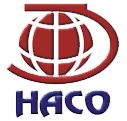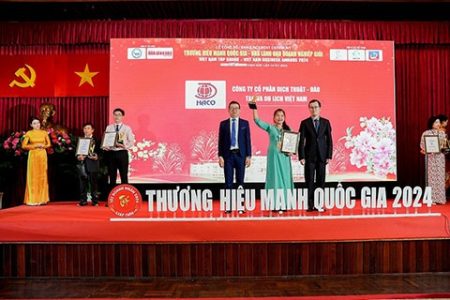"English Translation: Unlocking the World's Possibilities"
What is English translation?
English translation is the process of converting written text from one language to another. It is a complex process that requires a deep understanding of both languages and cultures. English translation is used in a variety of contexts, from business and legal documents to literature and academic papers. It is an important tool for communication between people who speak different languages, and it can help bridge cultural divides. English translation is also used to make information more accessible to people who do not speak the language in which it was originally written. With the help of English translation, people can access a wealth of knowledge and resources that would otherwise be inaccessible.
The Benefits of Translating English into Multiple Languages
Translating English into multiple languages can be a beneficial endeavor for many reasons. First, it can help to bridge the gap between cultures and promote understanding between people of different backgrounds. By providing access to information in multiple languages, it can help to create a more inclusive environment and foster greater communication between people of different cultures.
Second, translating English into multiple languages can help to expand the reach of businesses and organizations. By providing content in multiple languages, businesses and organizations can reach a wider audience and increase their customer base. This can be especially beneficial for businesses that operate in multiple countries or regions, as it can help to ensure that their products and services are accessible to a larger number of potential customers.
Third, translating English into multiple languages can help to improve the accuracy of translations. By providing translations in multiple languages, it can help to ensure that the translations are accurate and that the intended meaning is conveyed. This can be especially important for documents that contain important information or instructions, as it can help to ensure that the information is accurately conveyed.
Finally, translating English into multiple languages can help to promote literacy. By providing content in multiple languages, it can help to encourage people to learn new languages and become more literate. This can be especially beneficial for people who are learning English as a second language, as it can help to provide them with additional resources to help them learn the language.
Overall, translating English into multiple languages can be a beneficial endeavor for many reasons. By providing access to information in multiple languages, it can help to bridge the gap between cultures and promote understanding between people of different backgrounds. Additionally, it can help to expand the reach of businesses and organizations, improve the accuracy of translations, and promote literacy.

Classification of types of English translation
Translation can be classified into several types based on various factors, including:
- Direction: Translation can be classified as either "from source to target language" or "from target to source language."
- Purpose: Translation can be performed for various purposes, such as legal, medical, scientific, technical, or literary.
- Degree of creativity: Translation can range from being a literal rendering of the source text to a more creative interpretation that conveys the meaning in a way that is idiomatic and natural in the target language.
- Mode of delivery: Translation can be delivered in various forms, such as written text, spoken words, or sign language.
- Domain: Translation can also be classified based on the specific domain or subject matter, such as financial, automotive, or gaming.
In summary, the classification of translation depends on the specific requirements of the translation project and the goals of the translation process.
TRANSLATION - TRAINING JOINT STOCK COMPANY
& VIETNAM TOURISM US

English translation methods
There are several methods used in the process of translation, including:
- Literal Translation: This method involves translating each word or phrase in the source language into its equivalent in the target language without considering the context or idiomatic expressions. This method is often used for technical or scientific documents where accuracy is more important than cultural or idiomatic fluency.
- Free Translation: This method involves translating the meaning of the source text into the target language, rather than translating each word or phrase. The translator is free to express the meaning of the source text in their own words and style, making this method more suitable for creative or literary texts.
- Adaptation Translation: This method involves translating the source text into the target language while taking into account the cultural and social differences between the two languages. The translator must adapt the content to make it culturally appropriate for the target audience.
- Dynamic Equivalence Translation: This method involves translating the source text into the target language while preserving the meaning, style, and tone of the original. The goal is to produce a translation that is equivalent to the source text in every respect.
- Formal Equivalence Translation: This method involves translating the source text into the target language while preserving the formal structures and linguistic forms of the original. The goal is to produce a translation that is equivalent in form and structure to the source text.
The method used for a particular translation project will depend on the specific requirements of the project and the goals of the translation process.

Haco - Top 10 brands Asean 2023
The Challenges of Translating Idioms and Slang
Idioms and slang are an integral part of any language, and they can be difficult to translate accurately. Idioms are phrases that have a figurative meaning, often one that is different from the literal meaning of the words. Slang is informal language that is used in a particular context or by a particular group of people. Both idioms and slang can be difficult to translate because they are often culture-specific and can have multiple meanings.
Translating idioms and slang can be a challenge because they often have multiple meanings. For example, the English phrase “it’s raining cats and dogs” is an idiom that means it is raining heavily. However, this phrase has no literal meaning and can be difficult to translate into other languages. Similarly, slang words can have multiple meanings depending on the context in which they are used. For example, the English slang word “dude” can mean a friend, an acquaintance, or a stranger, depending on the context.
Another challenge of translating idioms and slang is that they are often culture-specific. Idioms and slang often contain references to cultural events, beliefs, or customs that may not be familiar to people from other cultures. For example, the English phrase “it’s a piece of cake” is an idiom that means something is easy to do. However, this phrase may not make sense to someone from a culture that does not have a tradition of eating cake. Similarly, slang words can be difficult to translate because they often refer to specific cultural phenomena.
Finally, translating idioms and slang can be difficult because they often contain puns or wordplay. Puns and wordplay are often difficult to translate because they rely on the sound of words or the double meaning of words. For example, the English phrase “it’s raining buckets” is an idiom that means it is raining heavily. However, this phrase relies on the double meaning of the word “bucket” and may not make sense in other languages.
In conclusion, translating idioms and slang can be a challenge because they often have multiple meanings, are culture-specific, and contain puns or wordplay. Translators must be aware of these challenges and take extra care when translating idioms and slang to ensure that the meaning is accurately conveyed.
The Benefits of Professional English Translation Services
Professional English translation services provide a number of benefits to businesses and individuals alike. By utilizing the services of a professional translator, businesses can ensure that their documents, websites, and other materials are accurately translated into the target language. This can help to ensure that the intended message is conveyed accurately and effectively.
One of the primary benefits of professional English translation services is accuracy. Professional translators are highly trained and experienced in the nuances of the language, and they are able to accurately convey the intended meaning of the source material. This is especially important when translating documents that contain technical or legal terminology, as even a small mistake can have serious consequences. Professional translators are also able to ensure that the translated material is culturally appropriate, as they are familiar with the cultural context of the target language.
Another benefit of professional English translation services is speed. Professional translators are able to work quickly and efficiently, allowing businesses to get their documents translated in a timely manner. This can be especially important when dealing with time-sensitive documents, such as contracts or legal documents.
Finally, professional English translation services can help to save businesses money. By utilizing the services of a professional translator, businesses can avoid the costs associated with hiring an in-house translator or outsourcing the work to a third-party translation agency. Professional translators are also able to provide a higher quality of work than non-professional translators, which can help to ensure that the translated material is accurate and effective.
Overall, professional English translation services provide a number of benefits to businesses and individuals alike. By utilizing the services of a professional translator, businesses can ensure that their documents, websites, and other materials are accurately translated into the target language. This can help to ensure that the intended message is conveyed accurately and effectively, while also saving time and money.
HACO MIỀN BẮC
Địa chỉ: Số: 2 Ngõ 68 phố Ngụy Như Kon Tum, P. Nhân Chính, Q. Thanh Xuân, TP Hà Nội
Điện thoại: (084) 245543604
Di động:: (084)0983 820 520
Email: hanoi@dichthuathaco.vn
HACO MIỀN NAM
Địa chỉ: 2A/3 Nguyễn Thị Minh Khai, Phường ĐaKao, Quận 1, TP.HCM
Điện thoại: (084) 245543604
Di động:: (084)0983 820 520
Email: hanoi@dichthuathaco.vn
HACO SINGAPORE
Địa chỉ: 391B Orchard Road, Ngee City Tower B, Singapore 238874
Điện thoại: (084) 245543604
Di động: (084)0983 820 520
Email: hanoi@dichthuathaco.vn












